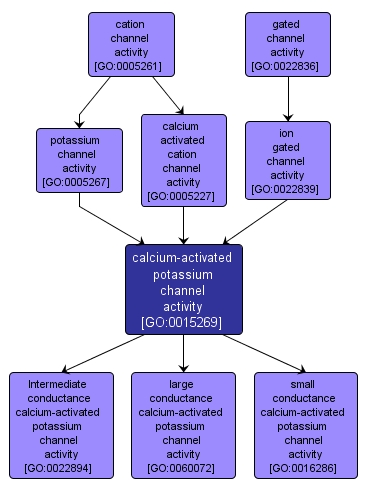GO TERM SUMMARY
|
| Name: |
calcium-activated potassium channel activity |
| Acc: |
GO:0015269 |
| Aspect: |
Molecular Function |
| Desc: |
Catalysis of the calcium concentration-regulatable energy-independent passage of potassium ions across a lipid bilayer down a concentration gradient. |
|

|
INTERACTIVE GO GRAPH
|














